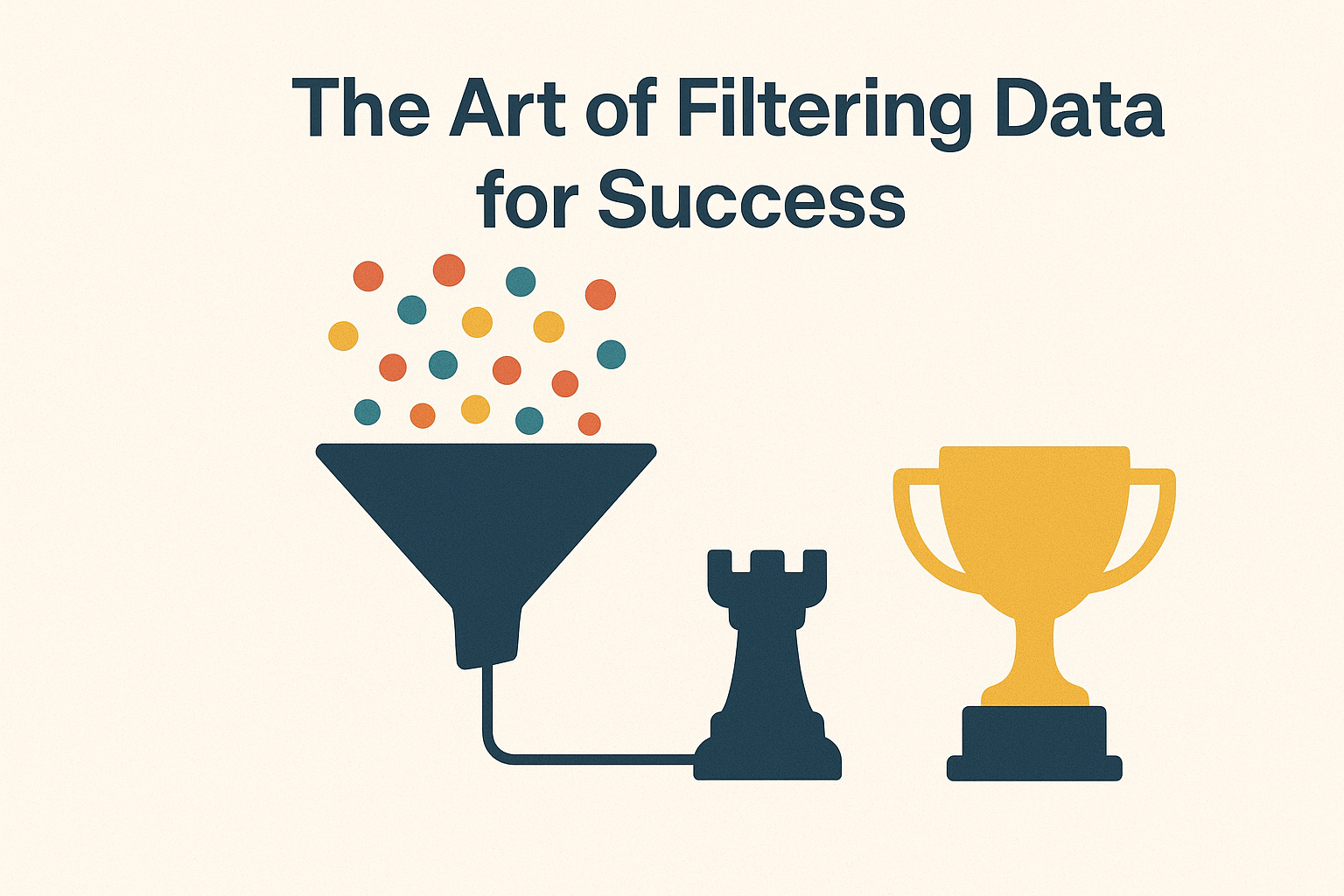"Less Is More: The Art of Filtering Data for Strategy and Success"

What’s the Best Thing to Do With Data? Too often, the answer is: Look at as much of it as possible. My answer: Look at as little as possible.
But make sure you’re looking at the right data - the kind that actually lets you measure and steer your strategy.
Upscore’s analytics offer an almost endless variety of perspectives on your numbers. Metrics combined with filters, views like bars or bubbles, and additional indicators from paywalls or content streams.
I often hear the question: “How are we supposed to keep track of all this?”. And my answer is clear: You don’t have to keep track of all of it!
The real skill lies in knowing which data you can confidently ignore.
Of course, I also sometimes dig wildly through data - when analyzing our Upscore benchmarks or working with individual clients. But what may look random at first always has a purpose: I’m trying to form hypotheses - clues to potential connections.
Because every proper data analysis starts with a hypothesis—an assumption about a relationship. But not every hypothesis is equally useful. The only ones that matter are those that link metrics to actions and the achievement of specific goals.
Goals are essential for good measurement. If you want to be on time, you check the clock - not the thermometer.
“Action” is the second key element that helps us figure out which data matters - and which doesn’t. The real value lies in metrics you can actually influence.
A fictional example: What good does it do to know there’s a correlation between scroll depth and reach if you have no idea how to increase scroll depth in the first place?
A solid data analysis is always based on a hypothesis that can be verified or falsified. And ideally, the result is a set of key metrics that guide action - metrics you know you can move (based on previous analysis 😉).
In the end, a team - say, a newsroom - should focus on just a few numbers that reflect their goals and strategy.
And of course, a publishing house has different teams with different goals and plans. Naturally, they look at different numbers. That’s why Upscore is built to be so flexible.
One last note from 25 years of experience in digital journalism: I’ve always hoped that data analysis would uncover things that boost results quickly, sustainably—and painlessly.
I’m still looking.
In reality, anything that truly works tends to come with some kind of discomfort. Usually, it’s the discomfort of doing things differently. Of taking a risk.
Joachim Dreykluft is Head of Data & AI Strategies bei Upscore

